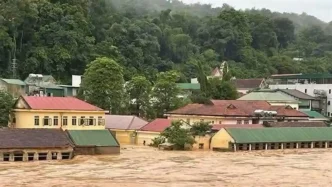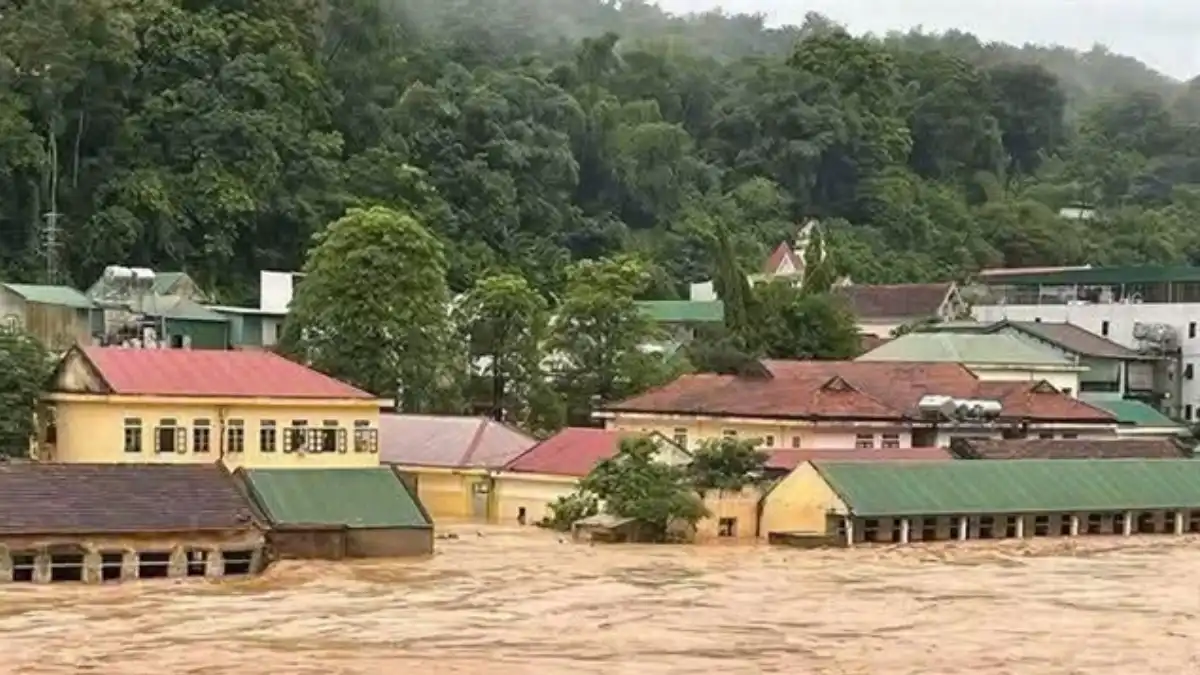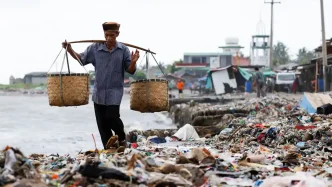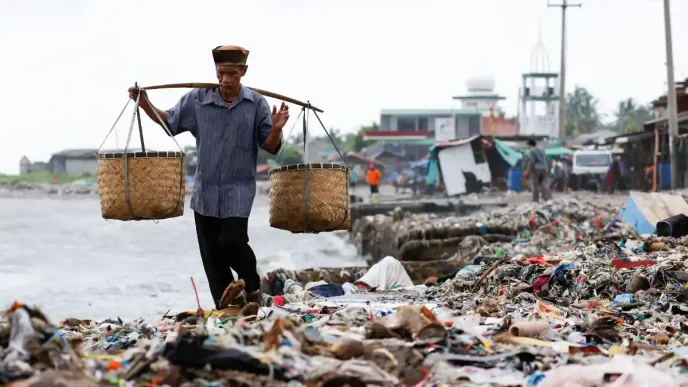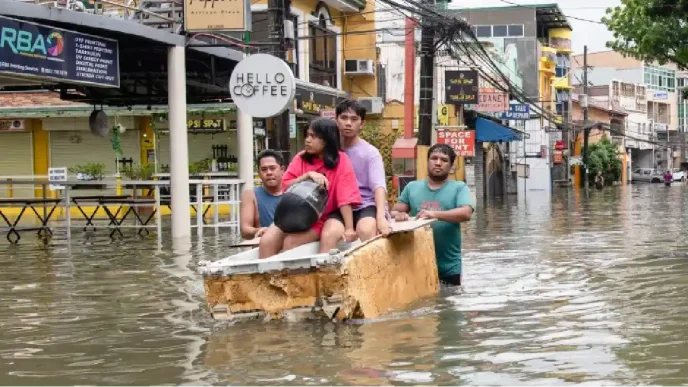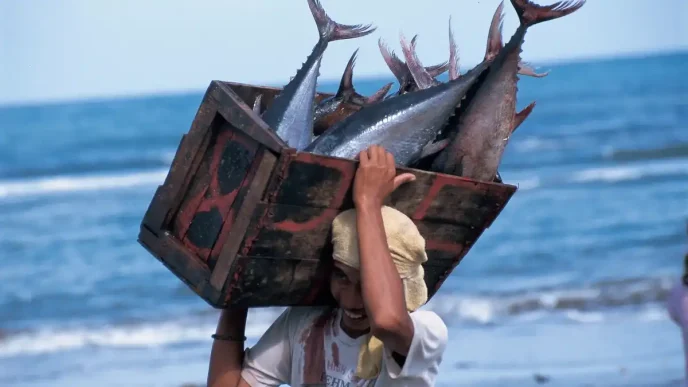In the wake of Typhoon Wipha, Vietnam is reeling from widespread destruction, with over 420 homes damaged and critical infrastructure overwhelmed by flooding. The storm, which struck the northern and central regions earlier this week, has left communities struggling to recover as overflowing reservoirs and disrupted services compound the crisis. As rescue efforts intensify, the disaster underscores the nation’s vulnerability to extreme weather and raises urgent questions about preparedness and resilience in the face of climate change.
Scale of Destruction and Immediate Impact
Typhoon Wipha tore through Vietnam with unrelenting force, leaving a trail of devastation in its path. According to reports from local authorities, at least 423 homes have been damaged, with many rendered uninhabitable due to flooding and structural collapse. Northern provinces such as Thanh Hoa and Nghe An bore the brunt of the storm, where torrential rains caused rivers to swell and low-lying areas to submerge. In some villages, entire neighborhoods were underwater, forcing residents to seek shelter on rooftops or in makeshift evacuation centers.
The human toll is palpable. Thousands of families have been displaced, their belongings washed away by floodwaters. Local media outlets have reported harrowing accounts of individuals wading through chest-deep water to salvage what little remains of their possessions. Beyond homes, critical infrastructure has taken a severe hit. Roads have been rendered impassable, bridges have collapsed, and power outages have affected tens of thousands of households. Telecommunications networks in rural areas are also disrupted, hampering coordination of relief efforts.
Reservoirs Overwhelmed and Flood Risks Escalate
One of the most alarming consequences of Typhoon Wipha is the strain on Vietnam’s water management systems. Heavy rainfall has overwhelmed reservoirs in the northern and central regions, pushing them beyond capacity. Authorities have been forced to release water from several dams to prevent catastrophic breaches, a decision that has led to downstream flooding in already vulnerable areas. In Thanh Hoa province, for instance, the release of water from the Cua Dat Reservoir has inundated agricultural lands, destroying crops and threatening food security for local farmers.
The cascading effect of these releases has heightened flood risks across the region. Vietnam’s National Center for Hydro-Meteorological Forecasting has issued warnings for continued heavy rain in the coming days, raising fears of further inundation. Emergency response teams are racing against time to reinforce embankments and distribute sandbags, but resources are stretched thin. The situation is particularly dire in remote areas, where access to aid remains limited due to damaged infrastructure.
Government Response and Relief Efforts
In response to the crisis, Vietnamese authorities have mobilized significant resources to assist affected communities. The government has deployed military personnel and disaster response units to conduct rescue operations and deliver emergency supplies. Temporary shelters have been established in schools and public buildings to house the displaced, while food, clean water, and medical aid are being distributed to those in need. Prime Minister Pham Minh Chinh has directed local governments to prioritize the safety of residents and expedite recovery efforts, emphasizing the need for swift action to mitigate further damage.
Non-governmental organizations and international aid agencies have also stepped in to support the relief operations. Volunteers are working alongside local officials to clear debris, repair infrastructure, and provide psychological support to traumatized residents. Despite these efforts, challenges persist. Overcrowded shelters lack adequate sanitation facilities, raising concerns about the spread of waterborne diseases. Moreover, the scale of the disaster has strained budgets, with some provincial authorities appealing for additional funding to sustain relief operations.
Climate Change and Vietnam’s Vulnerability
Typhoon Wipha is a stark reminder of Vietnam’s acute vulnerability to climate change. Situated in one of the world’s most typhoon-prone regions, the country faces increasing risks from extreme weather events as global temperatures rise. According to data from the Vietnam Institute of Meteorology, Hydrology and Climate Change, the frequency and intensity of storms have escalated over the past decade, driven by warming ocean temperatures and changing atmospheric patterns. Coastal and delta regions, home to millions of people and vital economic activities, are particularly exposed to flooding and storm surges.
The Mekong Delta, often referred to as Vietnam’s “rice bowl” is already grappling with the dual threats of rising sea levels and saltwater intrusion. Typhoons like Wipha exacerbate these challenges, disrupting agriculture and displacing communities that rely on farming for their livelihoods. In the northern regions, mountainous terrain amplifies the risk of landslides during heavy rains, posing additional hazards to remote villages. Experts warn that without robust adaptation measures, such disasters could become more frequent and severe, undermining Vietnam’s development gains.
Community Resilience Amid Adversity
Amid the devastation, stories of resilience and solidarity have emerged from Vietnam’s affected regions. In Thanh Hoa, community members have banded together to rebuild homes and share scarce resources, demonstrating the strength of local networks in times of crisis. Social media platforms have also played a role in amplifying calls for help, with posts detailing the urgent needs of isolated villages gaining traction online. While specific posts cannot be quoted due to verification constraints, the collective outpouring of support reflects a national determination to overcome the aftermath of Typhoon Wipha.
Local leaders have praised the spirit of mutual aid, noting that such unity is crucial for recovery. In Nghe An province, volunteers have organized donation drives to provide clothing and school supplies to children who lost everything in the floods. These grassroots initiatives, though small in scale, offer a glimmer of hope amid widespread loss, highlighting the importance of community-driven solutions alongside government intervention.
Challenges and the Road to Recovery
As Vietnam begins the daunting task of rebuilding, several challenges loom large. The immediate priority is restoring access to clean water and electricity, particularly in rural areas where services remain disrupted. Health risks are another pressing concern, with stagnant floodwaters creating breeding grounds for mosquitoes and increasing the likelihood of diseases such as dengue and cholera. Authorities are working to distribute mosquito nets and disinfectants, but the scale of the affected area makes comprehensive coverage difficult.
Economically, the typhoon’s impact is profound. The destruction of crops and livestock has dealt a blow to farmers, many of whom were already struggling with the lingering effects of previous natural disasters. Small businesses in urban centers have also been hit hard, with flooded markets and damaged storefronts disrupting trade. The government has promised financial assistance and low-interest loans to support recovery, but the timeline for disbursing these funds remains unclear.
Looking Ahead: Building Back Better
The aftermath of Typhoon Wipha has sparked a broader conversation about how Vietnam can better prepare for future disasters. Urban planners and environmentalists are calling for investments in flood-resistant infrastructure, such as improved drainage systems and stronger embankments. There is also a push for reforestation in upstream areas to reduce runoff and mitigate landslide risks. At the policy level, integrating climate resilience into national development plans is seen as essential to safeguarding vulnerable communities.
International cooperation could play a pivotal role in these efforts. Vietnam has previously benefited from partnerships with organizations like the Asian Development Bank and the United Nations, which have provided technical expertise and funding for disaster risk reduction projects. Strengthening these collaborations could help the country adopt best practices in early warning systems and emergency response protocols, potentially saving lives and reducing economic losses in future storms.
As Vietnam navigates the long road to recovery, the scars left by Typhoon Wipha serve as a call to action. With the threat of climate change looming larger than ever, the nation faces a critical juncture. Will it seize this moment to build back better, or will the cycle of destruction and rebuilding persist? The answer remains uncertain, but for the thousands of families picking up the pieces, the urgency of change has never been clearer.

